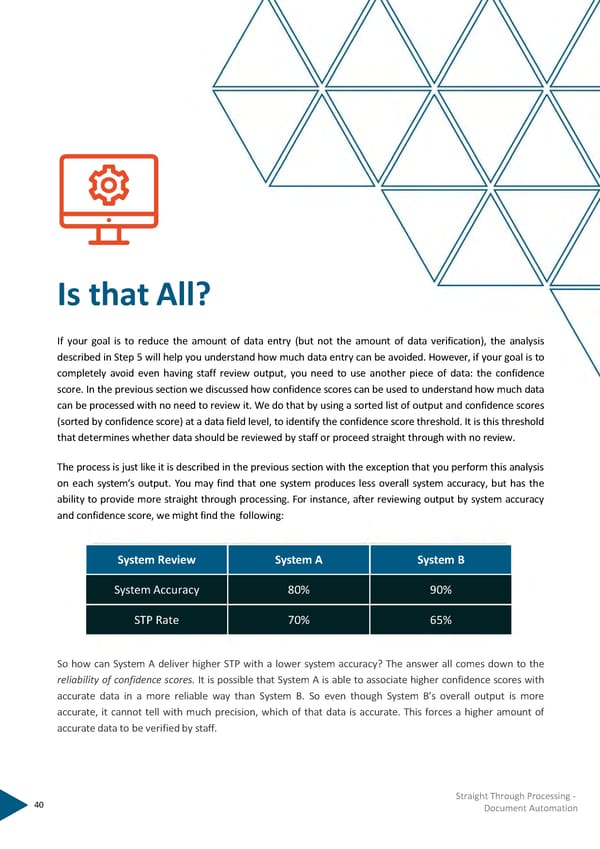Is that All? If your goal is to reduce the amount of data entry (but not the amount of data verification), the analysis described in Step 5 will help you understand how much data entry can be avoided. However, if your goal is to completely avoid even having staff review output, you need to use another piece of data: the confidence score. In the previous section we discussed how confidence scores can be used to understandhow much data canbeprocessedwithnoneedtoreviewit.Wedothatbyusingasortedlistofoutputandconfidencescores (sortedbyconfidencescore)atadatafieldlevel,toidentifytheconfidencescorethreshold.It is thisthreshold thatdetermineswhetherdatashouldbereviewedbystafforproceedstraightthroughwithnoreview. Theprocessis just like it is described in the previous section with the exception that you perform this analysis on each system’s output. You may find that one system produces less overall system accuracy, but has the ability to provide more straight through processing. For instance, after reviewing output by system accuracy andconfidencescore,wemightfindthe following: SystemReview SystemA SystemB System Accuracy 80% 90% STPRate 70% 65% So how can System A deliver higher STP with a lower system accuracy? The answer all comes down to the reliability of confidence scores. It is possible that System A is able to associate higher confidence scores with accurate data in a more reliable way than System B. So even though System B’s overall output is more accurate, it cannot tell with much precision, which of that data is accurate. This forces a higher amount of accuratedatato beverifiedbystaff. 40 Straight Through Processing - Document Automation
 Straight Through Processing for Document Automation Page 39 Page 41
Straight Through Processing for Document Automation Page 39 Page 41